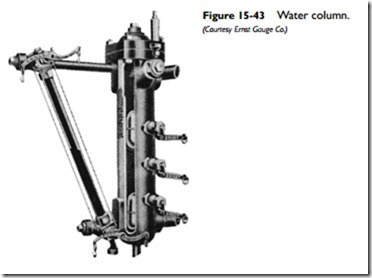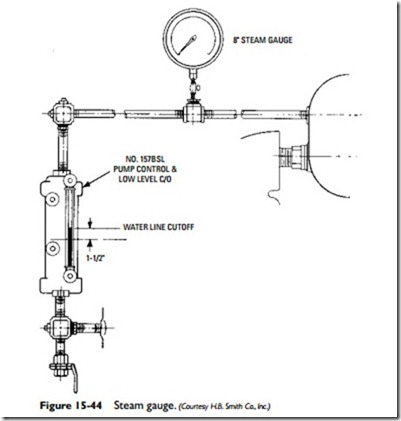Water Columns
A water column (Figure 15-43) is a boiler fitting that combines try cocks, a water gauge, and an alarm whistle in a single unit. A float in the column activates an alarm whistle when the water drops below a safe level.
Steam Gauges
The difference between the pressure found on the inside of the boiler and the pressure on the outside of it is indicated by a steam gauge (Figure 15-44). This is a gauge pressure reading and should not be
confused with absolute pressure. A steam gauge is used to measure the steam pressure at the top of the boiler. Generally, a reading of 12 psi (pounds per square-inch) indicates a dangerous buildup of pressure in low-pressure steam heating boilers. The boiler should be shut down before the pressure exceeds this level.
If the steam gauge is operating properly, the needle (or pointer) will move with each change of pressure inside the boiler. Shut off the steam, and the gauge needle should drop to zero; turn on the steam, and the needle should rise to the correct reading. It is very important that the steam gauge be regularly checked to ensure that it is operating properly.
The steam gauges used on boilers operate on the bent-tube principle, that is, the tendency of a bent or curved tube to assume a straight position when pressure is applied. As shown in Figure 15-45, one end of the curved tube is attached in a fixed position to a pigtail (connector tube), which, in turn, is attached to the boiler. The gauge needle is mounted on a rack-and-pinion gear attached to the free end of the curve tube. The pressure in the curved tube causes its free end to move slightly in its effort to assume a straight position. This slight move- ment is multiplied by the rack-and-pinion gear, causing the needle to rotate and indicate the steam pressure.

